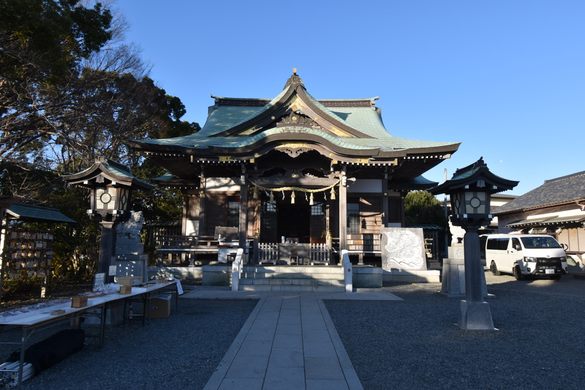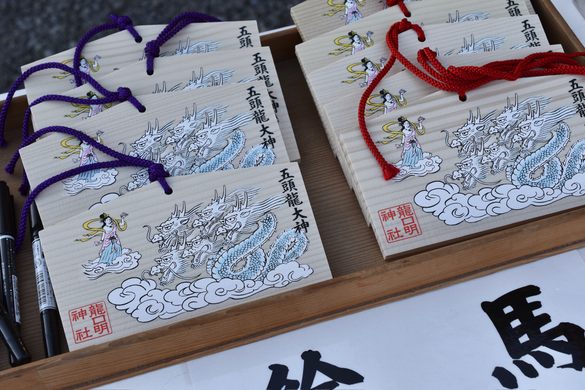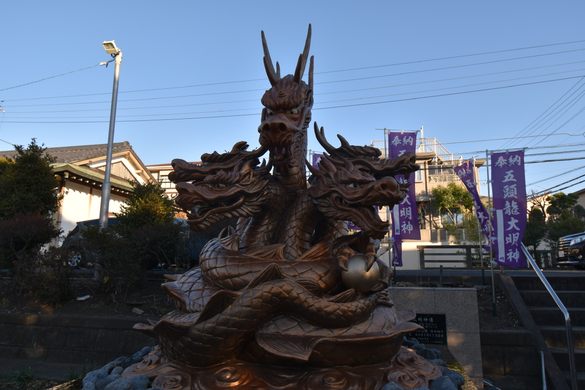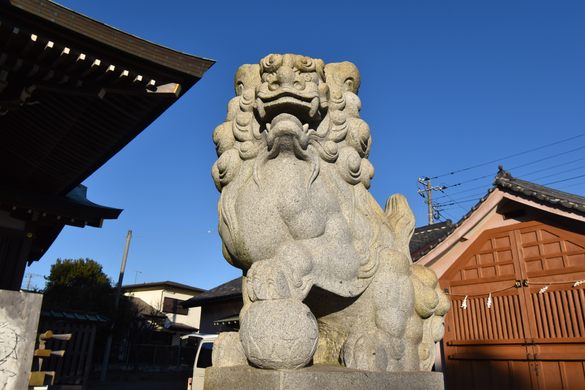AO Edited
Ryuko-Myojin Shrine
Once upon a time in Kamakura, a five-headed dragon fell in love with an Indian water goddess.
Ryūjin, literally translated as “Dragon God,” is one of the major deities in Japanese mythology. An embodiment of the forces of nature, the dragon represents the sun, the sky, the element of water, disasters, fortune, and power. His worship stems from ancient animism and continues to be popular across Japan, with hundreds of Shintō shrines dedicated to him.
Among those, Ryūkō-Myōjin Shrine in the Nishi-Kamakura neighborhood is a rare variant, being the only shrine of Gozūryū-Ōkami, the Five-Headed Dragon God.
According to the legend, Gozūryū-Ōkami once dwelled in a great lake in the town of Fukasawa and was feared by people for he often caused disastrous floods and demanded human sacrifices.
One day, the island of Enoshima emerged from beneath the sea, and a beautiful Indian water goddess named Benzaiten (Saraswati) descended from the heavens to act as its guardian. The dragon fell in love with her, and when she denounced his deeds he finally vowed to amend his ways.
Eventually, the goddess saw the goodness in the dragon’s heart and married him, gaining the townsfolk’s support and worship. Years later, the dragon went to sleep and turned into a mountain range, and the people built a shrine on top of Mount Ryūkō (“dragon-mouth”) in 552 in his honor.
In 1978, the shrine was moved to its current location, which is considered the Five-Headed Dragon’s belly and overlooks the island of Enoshima, where his beloved consort continues to be worshipped, protecting the region from natural disasters and forces of evil.
Know Before You Go
The temple is located roughly a 15-minute walk from the nearest JR railway station.




















Follow us on Twitter to get the latest on the world's hidden wonders.
Like us on Facebook to get the latest on the world's hidden wonders.
Follow us on Twitter Like us on Facebook